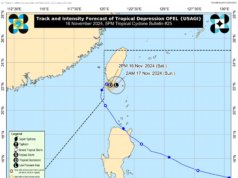A mistake—a Russian plane crossing into NATO territory or a NATO plane into Ukraine airspace—could bring the nuclear superpowers into direct conflict.
News of Russian tanks running out of gas and soldiers scrounging the countryside for food was good news in the early days of the war. But apparent weaknesses in the Russian military, and in President Vladimir Putin ’s standing abroad and at home, could increase the chance that Russia resorts to nuclear weapons in the conflict, military experts say. Russia already escalated the conflict when its forces failed to make quick work of the Ukrainian military with intense and indiscriminate attacks on civilian targets. If Russia’s campaign stalls again, nuclear weapons could wind up being a fallback option for Putin. „If the Russian campaign starts to feel like it’s a military catastrophe, that’s where escalation to nuclear weapons comes into play,“ says Barry Posen, Ford International Professor of Political Science at MIT. Military experts interviewed by Newsweek believe that such a nuclear conflagration is not likely at this point. Although Putin announced that Russia’s nuclear forces have been placed into „special combat readiness“ and made an implicit threat to use them against „whoever tries to interfere with us,“ he probably intended the tough talk to deter NATO from sending troops or planes into the battlefield, analysts say. The notion that nuclear war, despite the situation in Ukraine, is still a low-probability event offers little solace, however. „Probability is the wrong concept to apply to this situation,“ says Pavel Podvig, a senior researcher at the United Nations Institute for Disarmament research in Geneva, Switzerland. „What seems impossible now could in fact happen. This war is a one-off irreproducible event.“ Little is known about the dynamics of nuclear escalation on the battlefield. The only experience of nuclear weapons being used in a conflict came in August 1945, when the U.S. dropped two bombs on Japan at the end of the Second World War. There are no reliable assessments of the risk of a battlefield nuclear exchange escalating into a wider conflict involving Russia and the U.S., who each have thousands of nuclear-tipped intercontinental ballistic missiles aimed at one another. At issue in Ukraine is not so much ICBMs as „tactical“ nuclear weapons delivered on short or medium range missiles. Russia is thought to have about 2,000 of these weapons, many of them available for use in Ukraine. Although the U.S. and its allies have been adamant about staying on the sidelines to avoid a direct confrontation with Russian forces, military experts see many scenarios in which the Ukraine conflict could degenerate to the point where Russia deploys a nuclear weapon. A mistake or misunderstanding of some sort—such a Russian plane crossing into NATO territory or a NATO plane into Ukraine airspace—could bring the nuclear superpowers into direct conflict, leading Russia to use one of its tactical nukes. Although the nuclear threat seemed to fade from public view after the fall of the Berlin Wall in 1989 and the collapse of the Soviet Union, Cold-War-style nuclear fears are once again front and center. Ukraine is unlikely to be the last conflict between the so-called Great Powers—the U.S., China and Russia—that takes place under the cloud of potential nuclear war. It’s not hard to imagine other conflicts arising on Russia’s western border or off China’s eastern coast in the not-too-distant future.
Start
United States
USA — Science Nuclear Fears Intensify As Ukraine War Builds. What Is Putin's Threshold?






